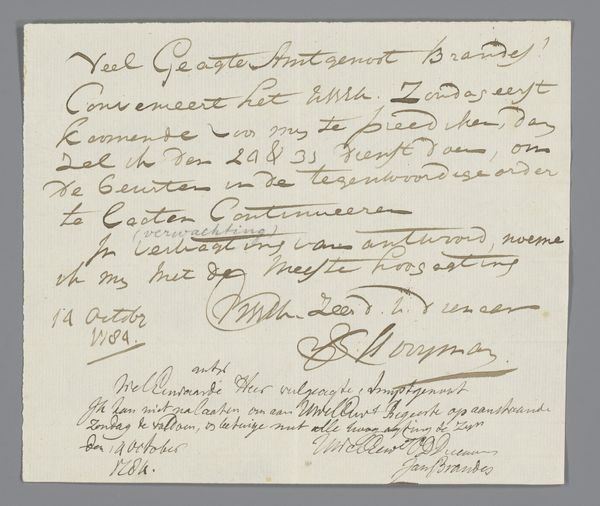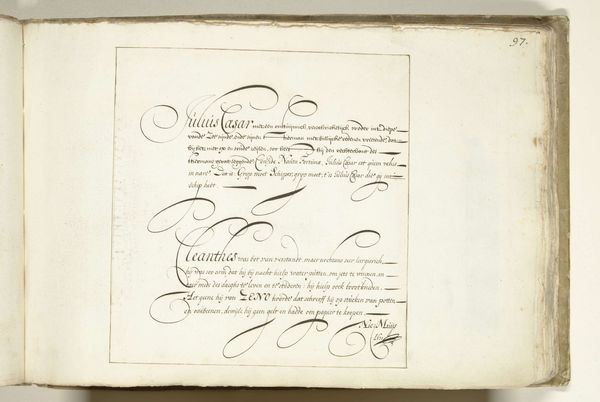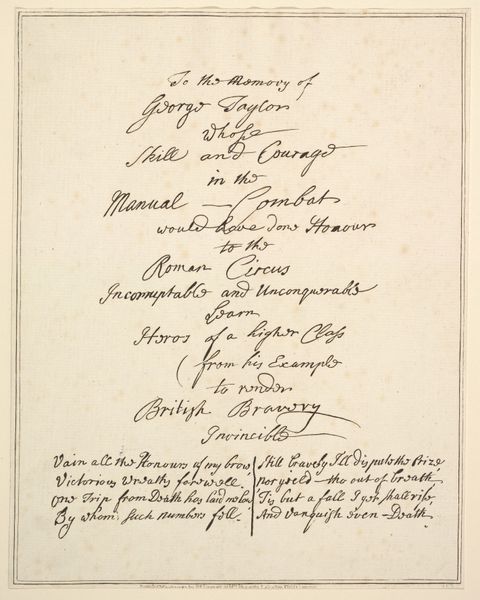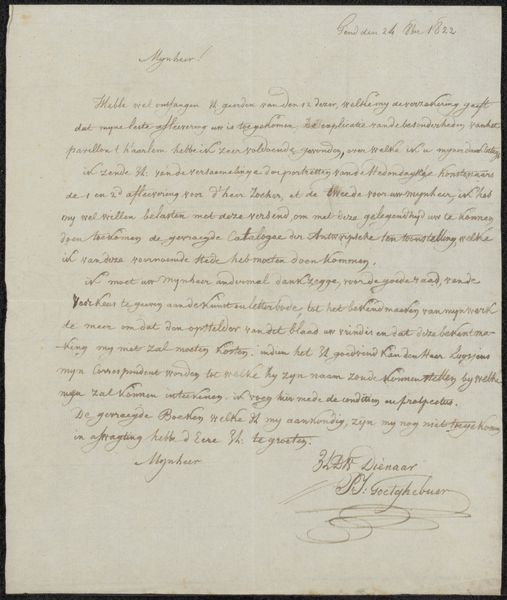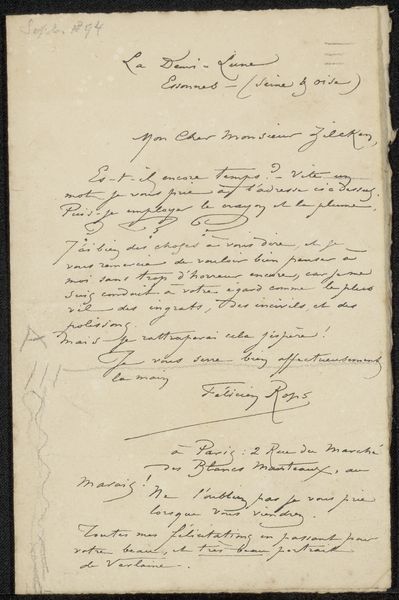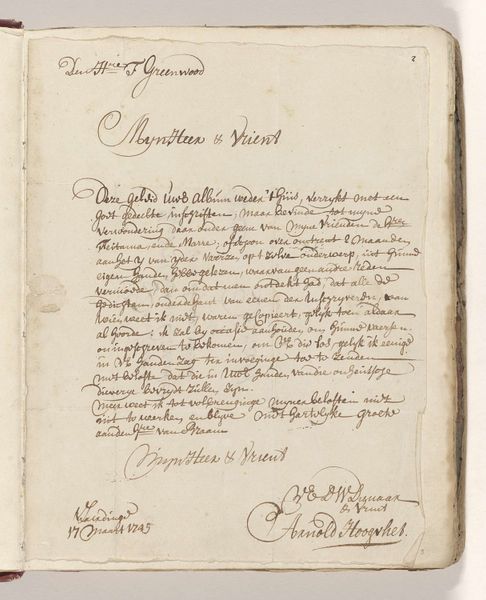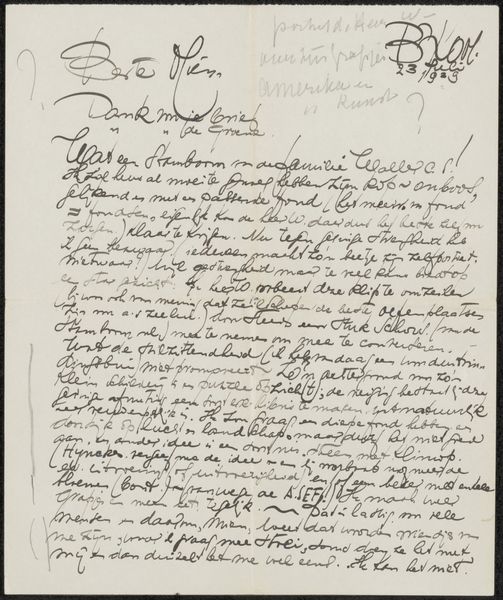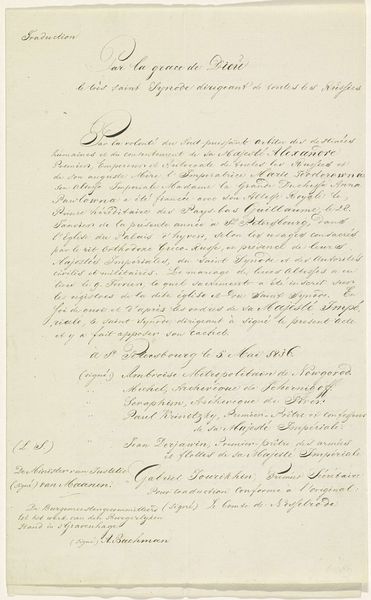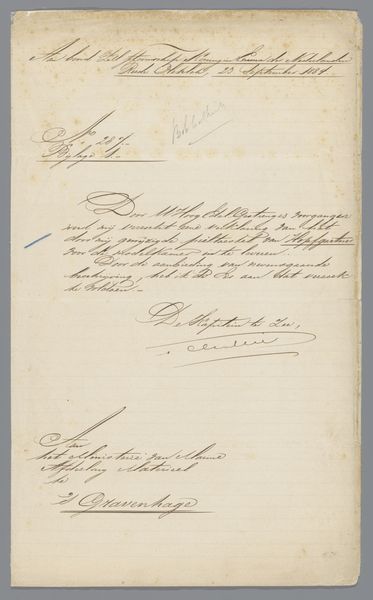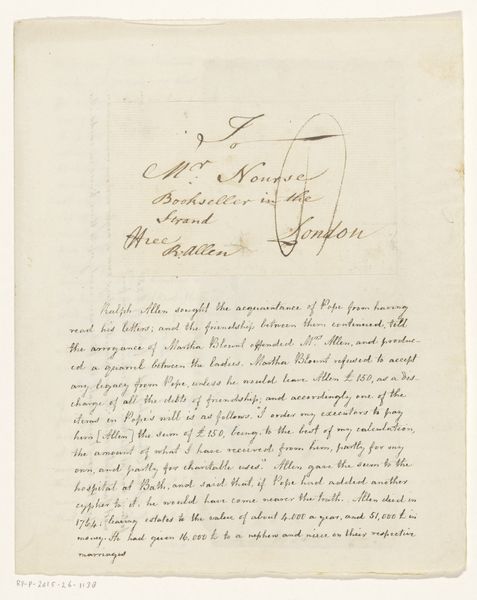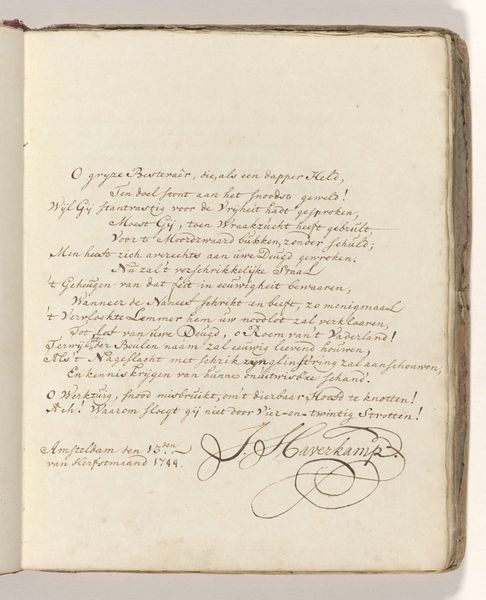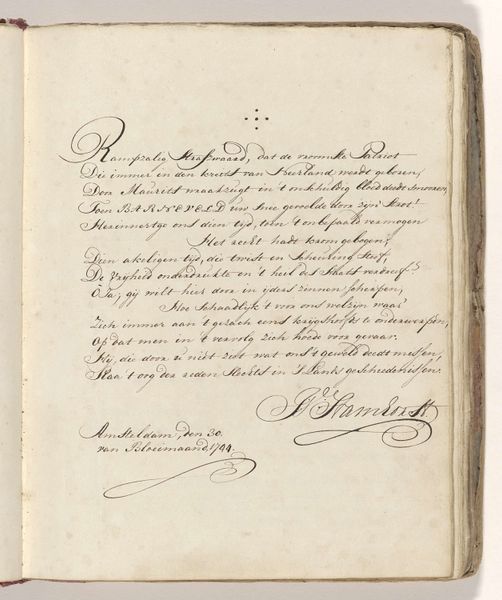
drawing, paper, ink, pen
#
portrait
#
drawing
#
comic strip sketch
#
hand-lettering
#
dutch-golden-age
#
hand drawn type
#
hand lettering
#
paper
#
personal sketchbook
#
ink
#
idea generation sketch
#
sketchwork
#
sketchbook drawing
#
pen
#
sketchbook art
#
calligraphy
#
initial sketch
Dimensions: height mm, width mm
Copyright: Rijks Museum: Open Domain
Editor: This intriguing work, titled "Brief van Maria Tesselschade Roemers Visscher," comes to us from between 1776 and 1851, and it's a pen and ink drawing. The elaborate calligraphy makes me think it's a letter or some sort of important document. What's your interpretation of this piece? Curator: It’s fascinating to see the legacy of Maria Tesselschade Roemers Visscher being invoked so long after her time. This piece speaks volumes about the cultural memory surrounding powerful women and artistic circles of the Dutch Golden Age. Notice how the hand-lettering style itself evokes that earlier era. Who do you think was the intended audience for a piece like this? Editor: Perhaps a collector interested in historical documents? Or maybe someone within literary or artistic circles looking back at that era? Curator: Precisely. It points to the increasing importance placed on preserving cultural heritage. In the 18th and 19th centuries, the "Dutch Golden Age" took on new political importance to unite a fractious populace after periods of occupation by France and other international powers. The artist Veelwaard likely tapped into these sentiments and cultural debates about the Dutch character. Do you see anything else that supports such claims? Editor: Well, it feels like he’s intentionally referencing Visscher as an idealized figure, a model for later generations. That handwriting is just exquisite! Curator: Exactly. This drawing performs a kind of cultural work. It makes the past visible and accessible, but also reshapes it to serve the values and ideals of a later time. What strikes me is how actively the artist has fashioned a tangible image from earlier sources in order to support the rising national feeling of his own time. Editor: So, it’s less about historical accuracy and more about crafting a specific narrative. Curator: Precisely! The power of imagery, then and now, is the narrative spun around it! Editor: I'll never look at historical documents the same way again. It makes you wonder what narratives we’re building today. Curator: Indeed. The past is never truly past; it's constantly being reimagined to serve the present.
Comments
No comments
Be the first to comment and join the conversation on the ultimate creative platform.
